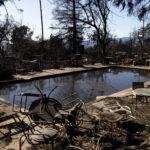Employers can reduce workplace hazards by teaching workers how to see like artists, according to the National Safety Council.
The organization isn’t recommending art classes. It says that research by the Campbell Institute in Itasca, Ill., shows that training workers on the concept of “visual literacy” identifies hazards that weren’t spotted previously. After 225 employees at a Cummins Inc. manufacturing site were trained in visual literacy, they identified 132 safety issues using the elements of visual literacy and submitted and corrected 25 hazards through the company’s “Find It Fix It” hazard recognition initiative, according to the study.
 “About 90 percent of the information people consume is visual,” said Campbell Institute Director John Dony in a press release last week. “Taking in that much visual data can lead us to have inattentional blindness – only seeing what we deem important to see but being blind to many other details like potential hazards.”
“About 90 percent of the information people consume is visual,” said Campbell Institute Director John Dony in a press release last week. “Taking in that much visual data can lead us to have inattentional blindness – only seeing what we deem important to see but being blind to many other details like potential hazards.”
Visual literacy is the ability to gain understanding from images, as opposed to words. It is a skillset typically acquired early on. Think of understanding a trend by looking at a bar graph.
The Toledo Museum of Art brought the concept of visual literacy to the field of occupational safety in 2015 when it began working with several companies in the Toledo, Ohio region, including Owens Corning, a Campbell Institute member. The museum launched a pilot program in 2015 to find out if training in visual literacy improves the ability to identify workplace hazards.
The museum teaches the art of seeing art, which involves organizing one’s thinking about an image by identifying the elements of art, color, line, shape and space, as well as the principles of design, including balance, proportion and emphasis. Using that skillset to identify industrial hazards involves taking the time to see details that can quickly become lost through everyday exposure at the workplace.
The Campbell Institute’s study gives the example of a machine operator who looks at the same work area and equipment every day for years and stops noticing the fine details that may identify a hazard, such as a worn surface.
The Toledo Museum of Art trained 300 Owens Corning staff members and volunteers in early 2015. It launched two-day train-the-trainer workshops in October 2017, teaching 14 participants from three companies on the elements of visual literacy. Using the template of line-shape-color-texture-space, Owens Corning created a process and vocabulary for looking at and assessing a work area for hazards.
After completing training, workers at the Cummins plant completed job safety assessments and identified 17 slip, trip and fall hazards and nine machine hazards. Researchers compared the employee’s assessment of risk factors, expressed as scores, before and after the visual literacy training. The study found employees perceived greater risk in each of four hazard categories. The risk score for slip, trip and fall hazards, for example, increased from 310 before the training to 670 after.
The identified hazards included steps with worn treading and a missing handrail and a failsafe for stopping an engine that had sharp edges after being ground down.
“The first paper on the topic of visual literacy for hazard recognition attempted to establish the connection between what is primarily a skill/process in art education and the field of environment, health, and safety,” the Institute said. “The preliminary results from the research project so far and the initial feedback from workers and workshop attendees seem to confirm that this is a lasting connection and one with important implications for workplace health and safety outcomes.”
The Campbell Institute will outline the preliminary results of the study during a free webinar on March 19. To register, click here.
Source: The Campbell Institute
*This story ran previously in our sister publication Claims Journal





















 Update: LA Wildfire Insurance-Loss Estimates Approach $40 Billion
Update: LA Wildfire Insurance-Loss Estimates Approach $40 Billion  Significant But ‘Manageable’ Insurance Losses Expected From LA Fires: S&P
Significant But ‘Manageable’ Insurance Losses Expected From LA Fires: S&P  New Commercial Auto Exposures: The Evolution of Terror Liability Risk
New Commercial Auto Exposures: The Evolution of Terror Liability Risk  State Farm Pausing Nonrenewals in Compliance With CDI Notice
State Farm Pausing Nonrenewals in Compliance With CDI Notice 




